Abstract
Cyclotropium bromide, a new antimuscarinic agent, inhibits gastrointestinal motility in animals at lower doses than those required to inhibit gastric acid secretion and salivation. In man, cyclotropium bromide suppresses fasting and meal stimulated colonic motility. This study investigated the effects of single oral doses of 60 mg cyclotropium bromide, 60 mg hyoscine N-butylbromide and placebo on gastric emptying and on antral motor activity. Twenty four healthy men (mean age 25 years) participated in three experiments one week apart. The drugs were administered, in random double blind fashion, 30 minutes before the ingestion of a semisolid test meal labelled with 74 MBq (2 mCi) 99mTc sulphur colloid. A gamma camera coupled to a computer monitored gastric emptying together with amplitude, frequency, and propagation velocity of antral contractions. Cyclotropium bromide and, to a lesser degree, hyoscine N-butylbromide delayed gastric emptying and reduced contraction amplitude, but did not affect frequency and propagation velocity of antral contractions. Cyclotropium bromide was significantly more active than hyoscine N-butylbromide; the effects of hyoscine N-butylbromide differed significantly from placebo. Antral contractile activity was present all the time. After cyclotropium bromide, there was a significant correlation between antral contraction amplitude and gastric emptying. No adverse side effects occurred with any one treatment. In conclusion, cyclotropium bromide markedly inhibits gastric emptying and reduces antral contraction amplitude.
Full text
PDF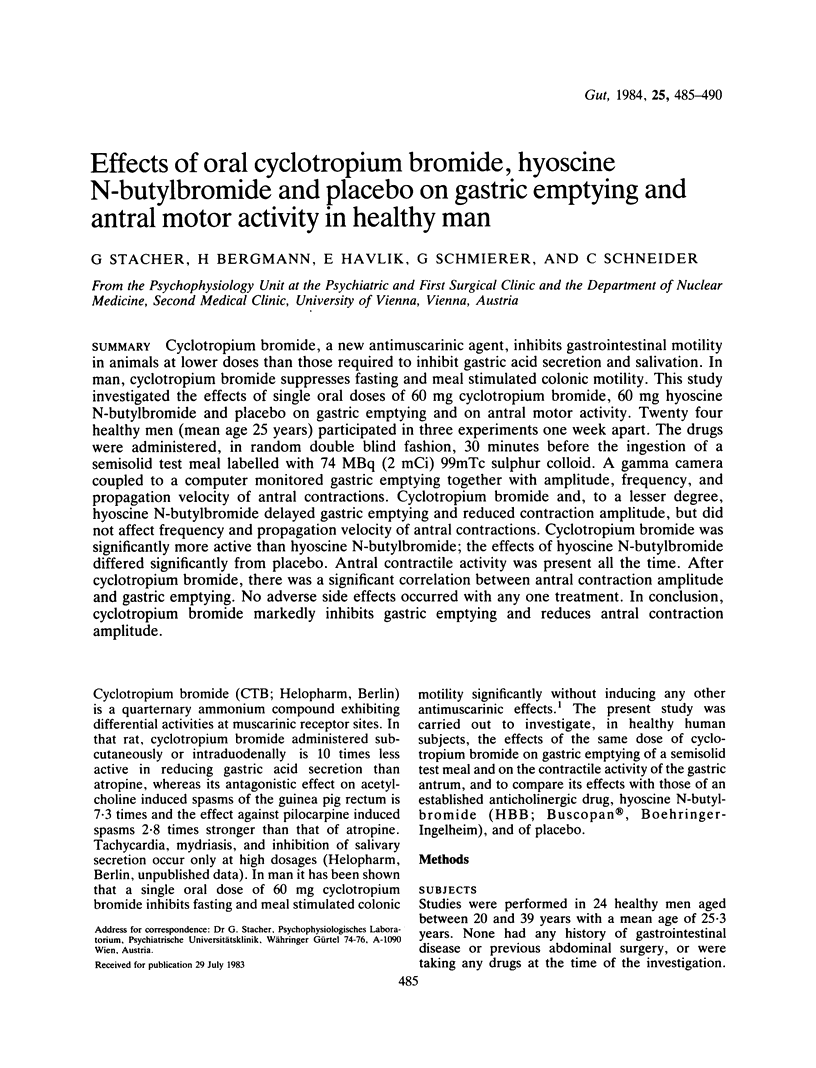
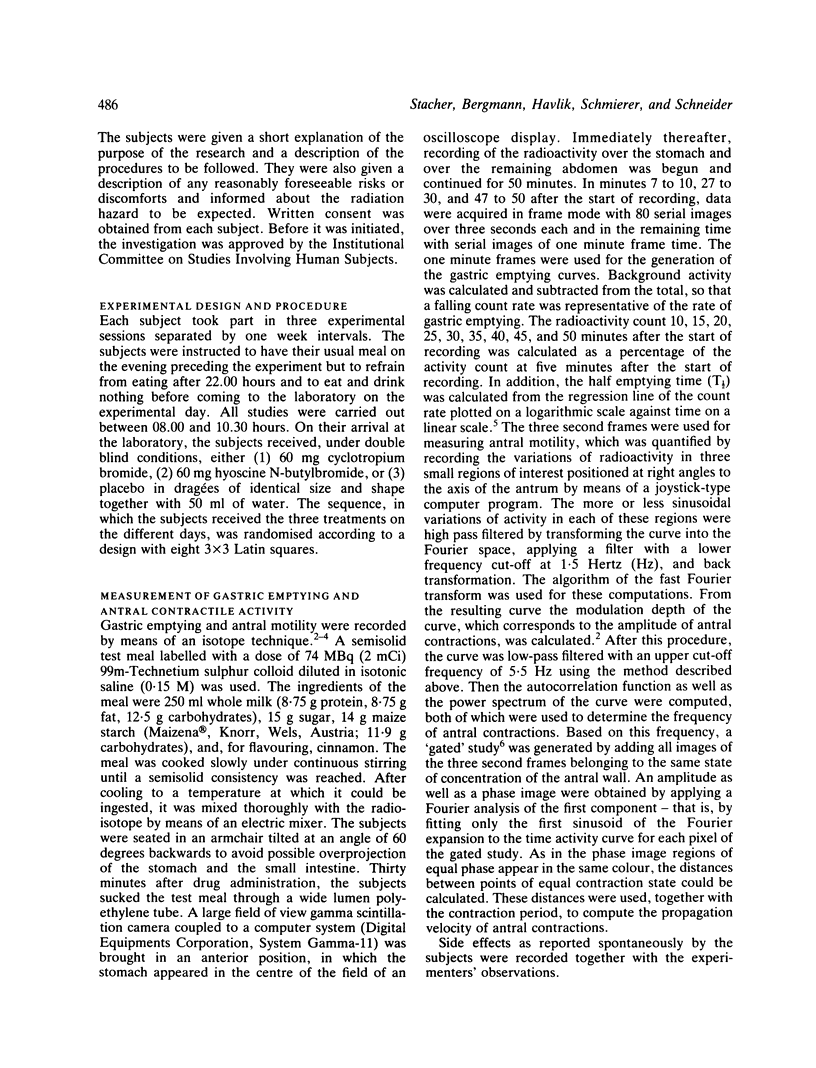
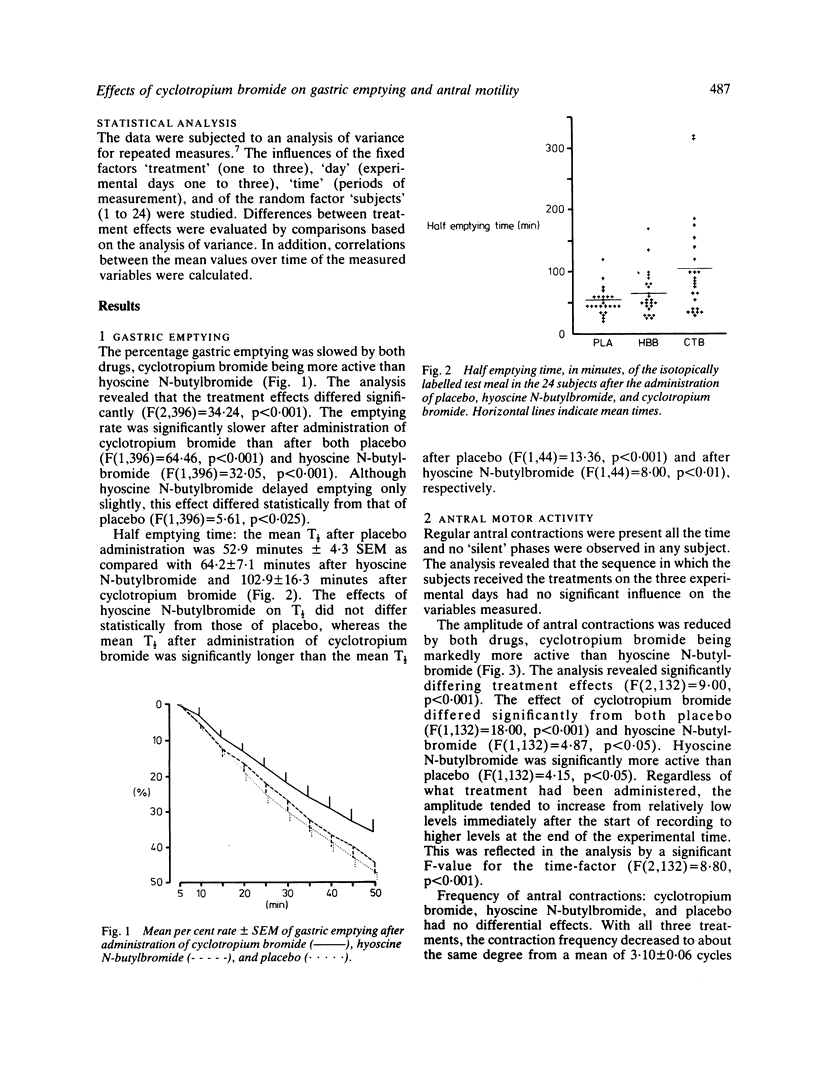
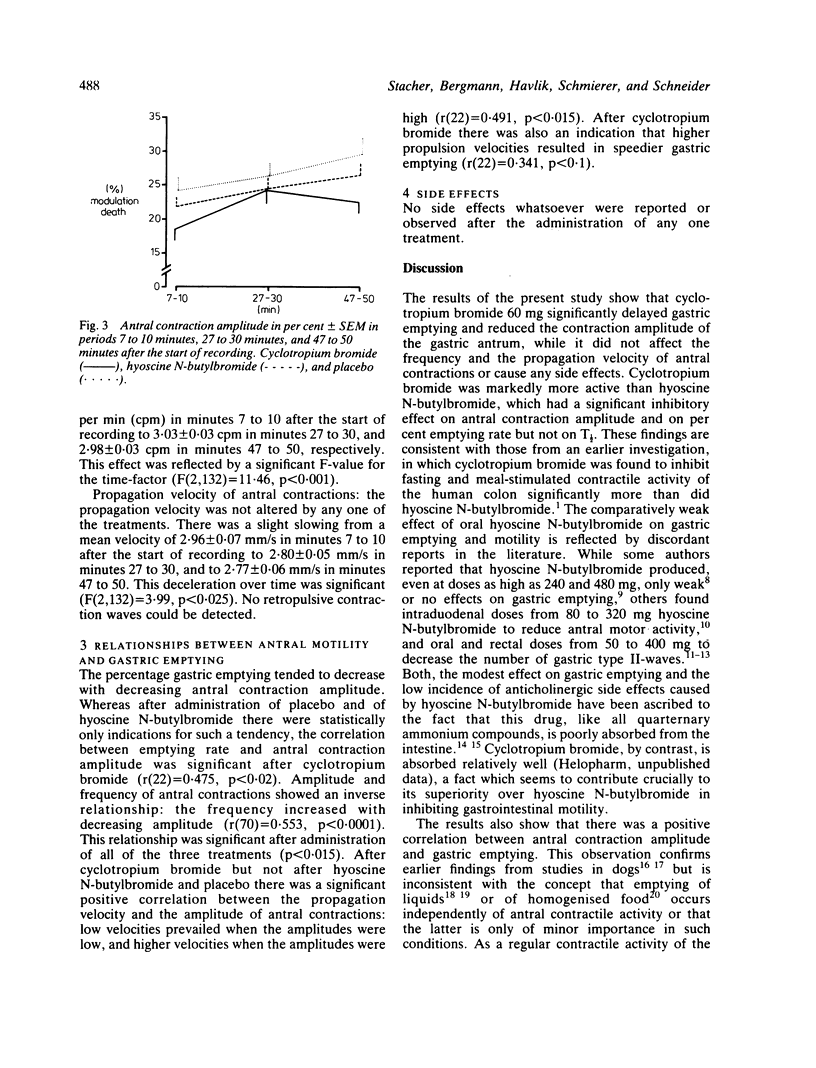
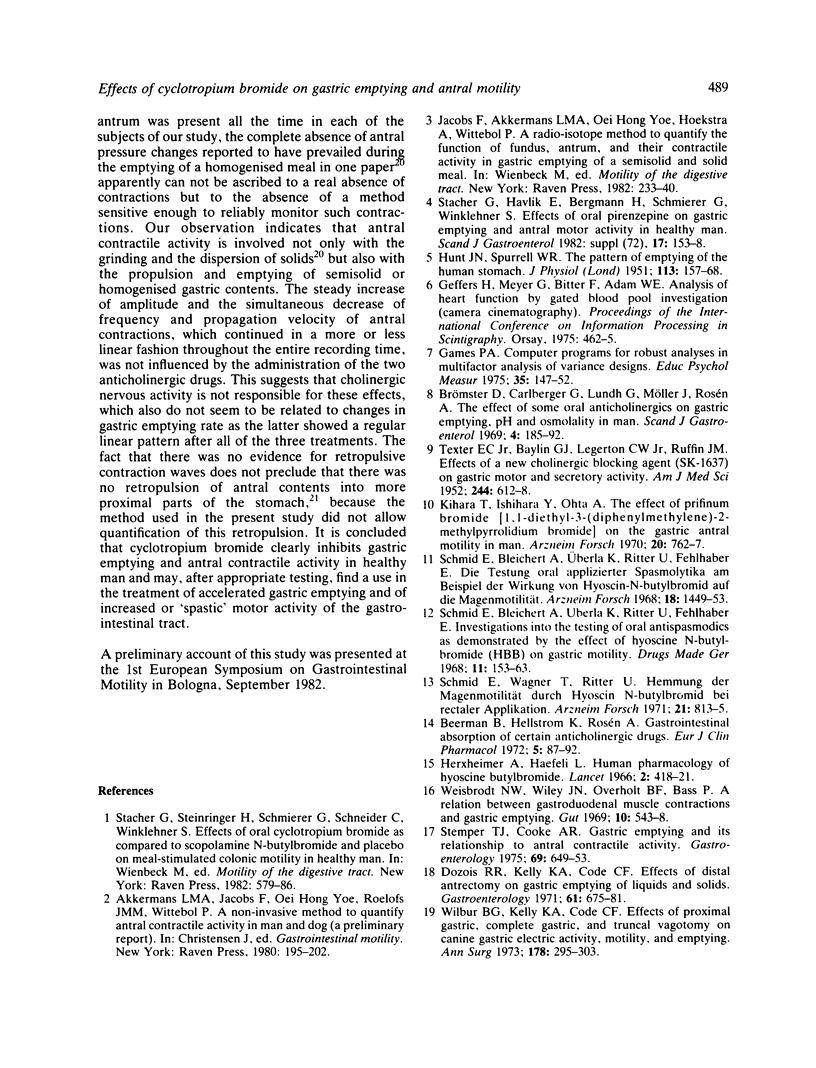
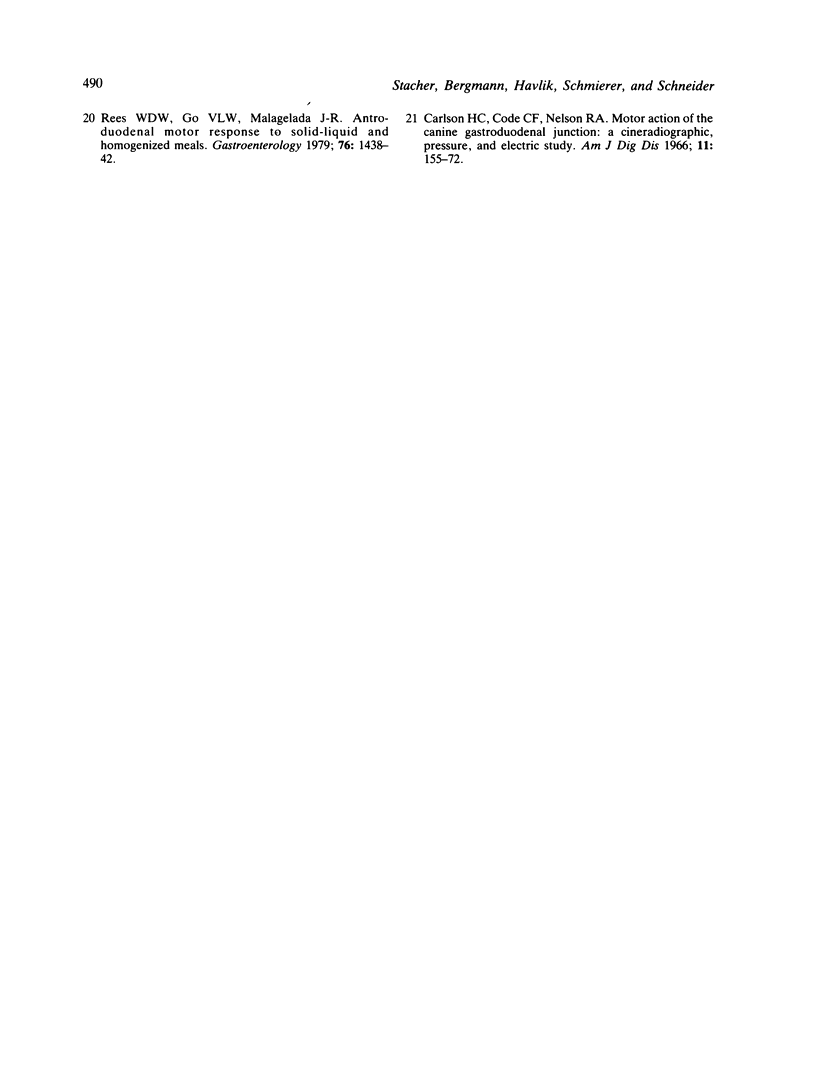
Selected References
These references are in PubMed. This may not be the complete list of references from this article.
- Brömster D., Carlberger G., Lundh G., Möller J., Rosén A. The effect of some oral anticholinergics on gastric emptying, pH and osmolarity in man. Scand J Gastroenterol. 1969;4(2):185–192. doi: 10.3109/00365526909179927. [DOI] [PubMed] [Google Scholar]
- Carlson H. C., Code C. F., Nelson R. A. Motor action of the canine gastroduodenal junction: a cineradiographic, pressure, and electric study. Am J Dig Dis. 1966 Feb;11(2):155–172. doi: 10.1007/BF02239239. [DOI] [PubMed] [Google Scholar]
- Dozois R. R., Kelly K. A., Code C. F. Effect of distal antrectomy on gastric emptying of liquids and solids. Gastroenterology. 1971 Nov;61(5):675–681. [PubMed] [Google Scholar]
- HUNT J. N., SPURRELL W. R. The pattern of emptying of the human stomach. J Physiol. 1951 Apr;113(2-3):157–168. doi: 10.1113/jphysiol.1951.sp004562. [DOI] [PMC free article] [PubMed] [Google Scholar]
- Rees W. D., Go V. L., Malagelada J. R. Antroduodenal motor response to solid-liquid and homogenized meals. Gastroenterology. 1979 Jun;76(6):1438–1442. [PubMed] [Google Scholar]
- Schmid E., Bleichert A., Uberla K., Ritter U., Fehlhaber E. Die Testung oral applizierter Spasmolytica am Beispiel der Wirkung von Hyoscin-N-butylbromid auf die Magenmotilität. Arzneimittelforschung. 1968 Nov;18(11):1449–1453. [PubMed] [Google Scholar]
- Schmid E., Wagner T., Ritter U. Hemmung der Magenmotilität durch Hyoscin-N-butylbromid bei rectaler Applikation. Arzneimittelforschung. 1971 Jun;21(6):813–815. [PubMed] [Google Scholar]
- Stacher G., Havlik E., Bergmann H., Schmierer G., Winklehner S. Effects of oral pirenzepine on gastric emptying and antral motor activity in healthy man. Scand J Gastroenterol Suppl. 1982;72:153–158. [PubMed] [Google Scholar]
- Stemper T. J. Gastric emptying and its relationship to antral contractile activity. Gastroenterology. 1975 Sep;69(3):649–653. [PubMed] [Google Scholar]
- TEXTER E. C., Jr, BAYLIN G. J., LEGERTON C. W., Jr, RUFFIN J. M. Effects of a new cholinergic blocking agent (SKF-1637) on gastric motor and secretory activity. Am J Med Sci. 1952 Dec;224(6):612–618. doi: 10.1097/00000441-195212000-00002. [DOI] [PubMed] [Google Scholar]
- Weisbrodt N. W., Wiley J. N., Overholt B. F., Bass P. A relation between gastroduodenal muscle contractions and gastric empyting. Gut. 1969 Jul;10(7):543–548. doi: 10.1136/gut.10.7.543. [DOI] [PMC free article] [PubMed] [Google Scholar]
- Wilbur B. G., Kelly K. A. Effect of proximal gastric, complete gastric, and truncal vagotomy on canine gastric electric activity, motility, and emptying. Ann Surg. 1973 Sep;178(3):295–303. doi: 10.1097/00000658-197309000-00009. [DOI] [PMC free article] [PubMed] [Google Scholar]


